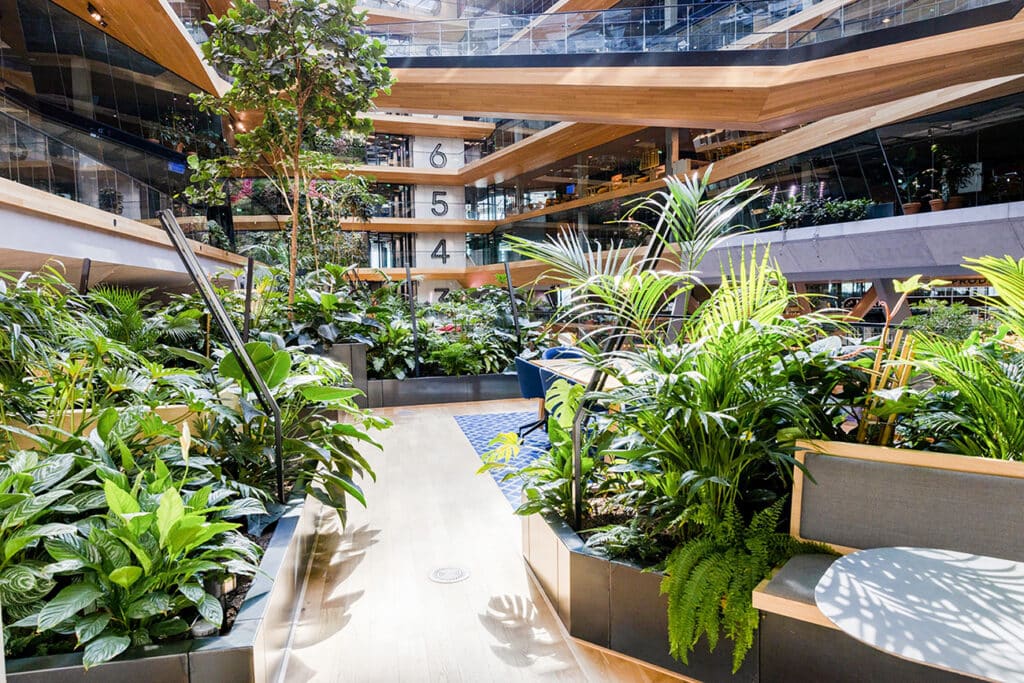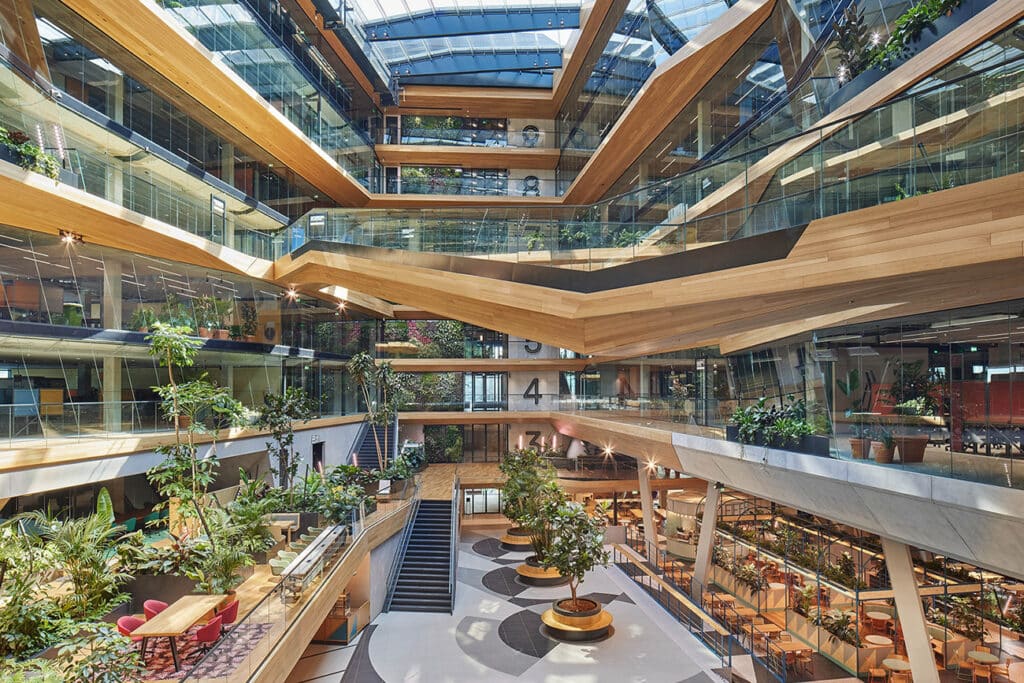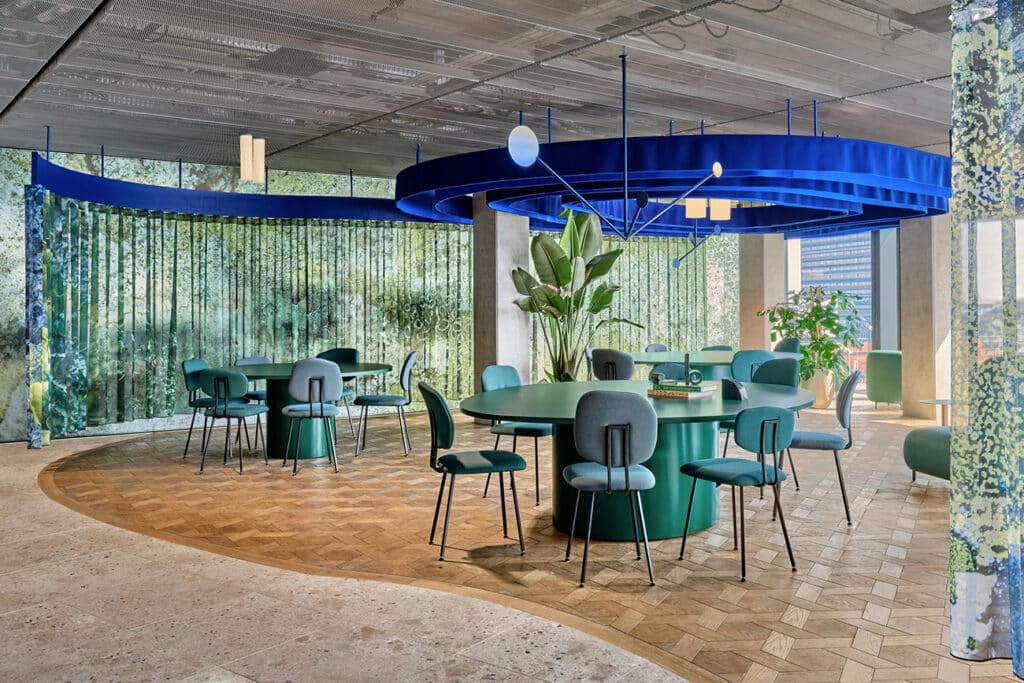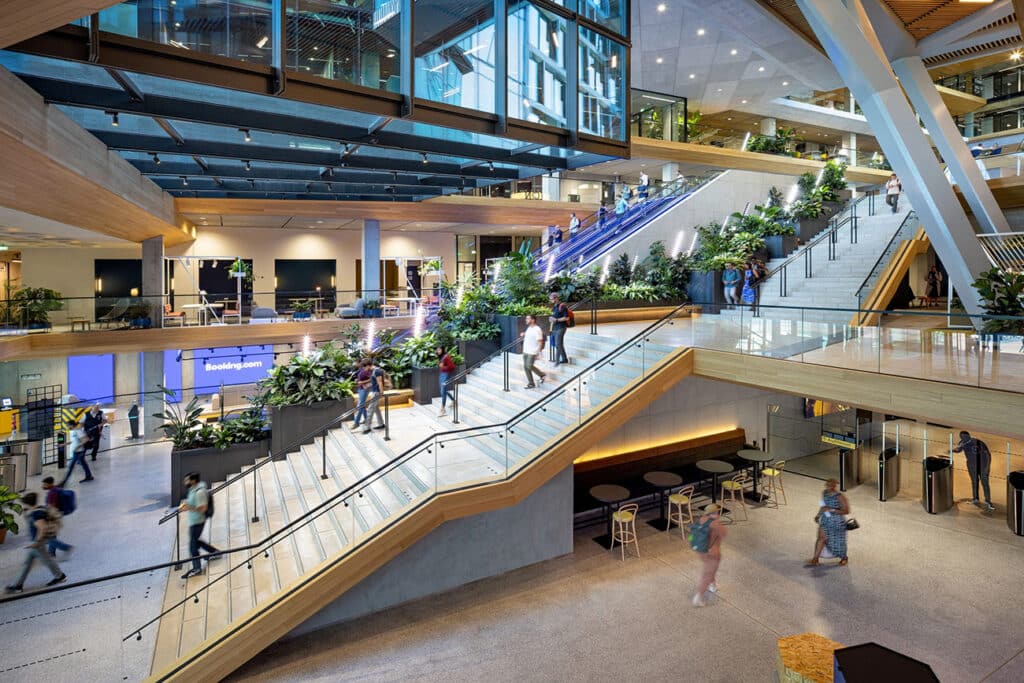
Green as thread running through colossal Booking.com office building
'People have an innate need for nature around them'
Amsterdam-based MOSS (Makers of Sustainable Spaces) is responsible for the biophilic design of the workplaces at the just-completed Booking.com City Campus in Amsterdam. They also designed several green outdoor terraces and the - partly freely accessible - roof terrace at the international headquarters of the world's largest accommodation search engine. "Green is proven to make people happier. However, an office that can accommodate both people and plants brings challenges."

MOSS founder Tessa Duste and managing director Kelai Diebel are pretty sure that hotels have a lot to learn from the website that completely revolutionised the industry not so long ago. This time not because of their huge reach and advanced search and booking capabilities, but because of the way Booking.com has set up its just-completed headquarters in Amsterdam. Hotels looking to become more sustainable can find plenty of inspiration on Oosterdokseiland, right next to Central Station. The huge office building of no less than 65,000 square metres that houses Booking's 6,500 employees looks and feels, above all, like a green oasis. Courtesy of the team at Makers of Sustainable Places (MOSS).

Biophilic design
The Booking City Campus was designed by architects UNStudio and Hofman Dujardin. MOSS was asked for the green design of the building and some outdoor terraces. The aim: to ensure that the building's users feel as good and happy as possible. Moss does this through so-called biophilic design, or 'designing from that human connection with nature'. "People have an innate need for nature around them," says Duste. "In a green environment, we feel better, are healthier and suffer less stress."
Therefore, Booking's new office looks more like a botanical garden inside than an office where more than 6,500 people work. There is no doubt that the beautiful surroundings have a positive impact on people. But how to maintain all that greenery?
Duste: "There are two people from a green contractor working almost full-time to care for and maintain the greenery we designed. Expensive is just how you look at it. I am convinced that staff are sick less often as a result and are much more productive. So you easily earn that back."

Diebel: "We already took maintenance into account during the design. That is an essential part of our design. The steps in the building with all those plants were actually designed to mimic nature, with water being delivered to the plant root zone with sub-irrigation. But we also contributed ideas on the location of water taps in the building, for example, to make watering easier. The location of each type of plant was also carefully considered. Precisely to keep maintenance as efficient as possible and to ensure that plants come into their own and grow well. Of course, an office space suitable for people and plants brings challenges, especially around (sun) light and humidity levels. Integrated planters, the right light and green walls increase physical and mental well-being at work."

Feeling at home
One of the main tasks entrusted to Moss when they were given this assignment was to create an atmosphere where people would feel at home in the colossal building. "We solved that by integrating high volume and intriguing greenery in key areas throughout the building. With different plant species and different ways of integrating them into the building: sometimes really part of the architecture and construction, sometimes added in pots and planters. In this way, we created very different living atmospheres throughout the building with accompanying vegetation."
Duste: "And it works. People who work there no longer meet in meeting room so much on the fourth floor but by the big tree in the middle. In all those different spaces - from the stairs, the balconies, the outdoor areas, the workspaces, the breakout rooms, three different restaurants - green is the common thread."




